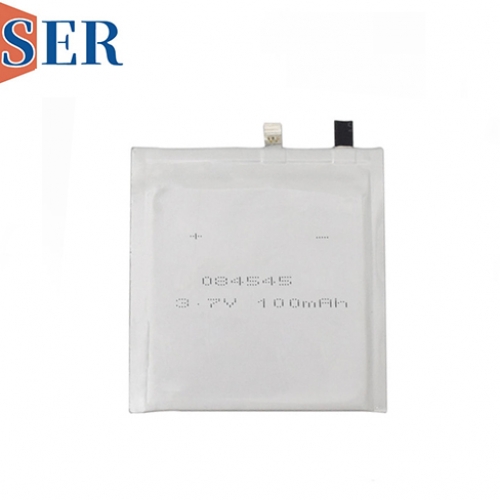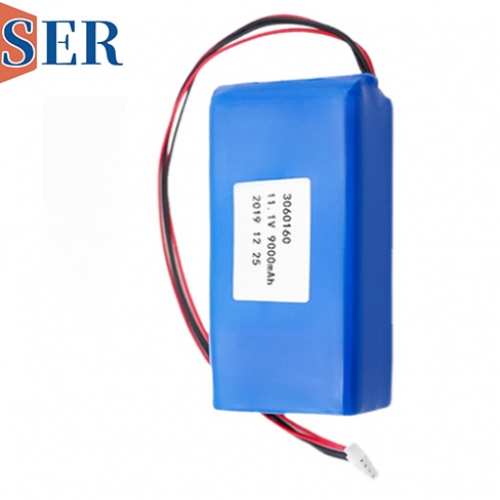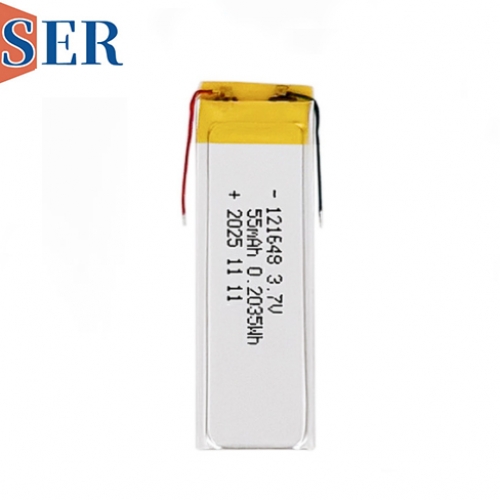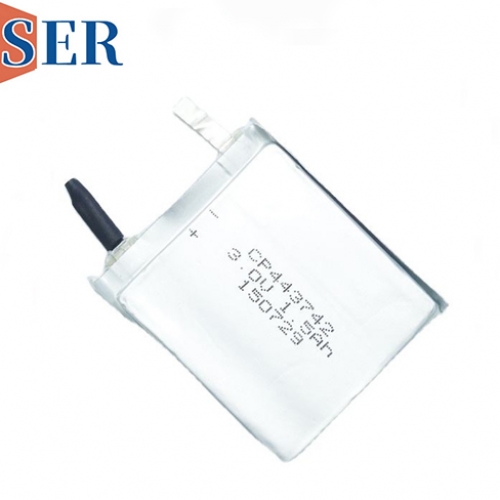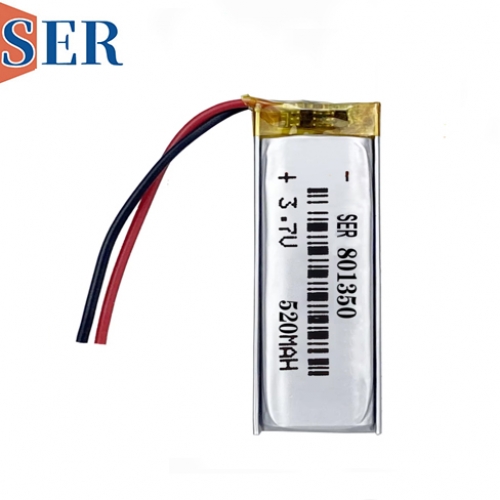LiSOCL2 battery and ultra thin Battery ( ultra thin LiMNO2 battery and ultra thin Lipo battery ) are for wireless trackers and IOT devices
LiSOCL2 battery and ultra thin Battery ( ultra thin LiMNO2 battery and ultra thin Lipo battery ) are for wireless trackers and IOT devices
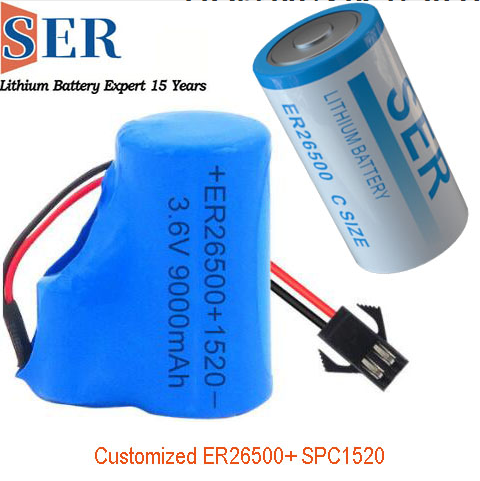
Abstract
In the rapidly evolving landscape of wireless trackers and Internet of Things (IoT) devices, the selection of an appropriate battery is of paramount importance. These devices, often operating without external wiring and relying solely on built-in power sources, demand batteries that can offer long - lasting performance, high energy density, and reliability. This article focuses on two prominent battery types used in this domain: LiSOCl₂ batteries and ultra - thin batteries (including ultra - thin LiMnO₂ and ultra - thin LiPo batteries). By examining their characteristics, advantages, limitations, and suitability for wireless trackers and IoT devices, we aim to provide a comprehensive guide for manufacturers, developers, and end - users.
1. Introduction
The proliferation of wireless trackers and IoT devices has transformed various industries, from logistics and asset management to personal safety and smart home applications. These devices are designed to operate autonomously, transmitting data and performing functions without the need for external power connections. As a result, the battery becomes the lifeblood of these devices, determining their operational life, performance, and overall usability.
The requirements for batteries in wireless trackers and IoT devices are unique. They need to have a long shelf life, high energy density to support continuous or intermittent operation, and the ability to withstand a wide range of environmental conditions. Additionally, factors such as size, weight, and cost also play crucial roles in battery selection. Among the various battery options available, LiSOCl₂ batteries and ultra - thin batteries have emerged as the most widely used choices.
2. LiSOCl₂ Batteries: The Powerhouse for Long - Lasting Performance
2.1 High Energy Density: A Key Advantage
LiSOCl₂ (Lithium Thionyl Chloride) batteries are renowned for their exceptionally high energy density. Energy density refers to the amount of energy a battery can store per unit volume or mass. In the context of wireless trackers and IoT devices, where space is often at a premium, a high - energy - density battery is essential.
LiSOCl₂ batteries achieve their high energy density through a unique chemical reaction. The lithium anode reacts with thionyl chloride (SOCl₂) as the cathode material, releasing a large amount of electrical energy. This high energy density allows LiSOCl₂ batteries to power wireless trackers for extended periods, often lasting several years on a single charge. For example, in asset tracking applications where devices may be deployed in remote locations for long - term monitoring, LiSOCl₂ batteries can provide reliable power without the need for frequent battery replacements.
2.2 Low Self - Discharge Rate: Long - Term Energy Retention
One of the most significant advantages of LiSOCl₂ batteries is their extremely low self - discharge rate. Self - discharge is the natural loss of a battery's charge over time, even when not in use. LiSOCl₂ batteries have a self - discharge rate that is among the lowest in the battery industry, typically less than 1% per year.
This low self - discharge rate is crucial for wireless trackers and IoT devices that may be stored for extended periods before being deployed. For instance, in a warehouse where a large number of trackers are kept in inventory, the batteries will retain their charge for a long time, ensuring that the devices are ready for use when needed. This eliminates the need for pre - deployment charging and reduces the overall maintenance costs associated with battery management.
2.3 Wide Operating Temperature Range: Reliability in Extreme Conditions
Wireless trackers and IoT devices are often exposed to a wide range of environmental temperatures, from freezing cold in outdoor winter applications to scorching heat in industrial settings. LiSOCl₂ batteries are well - suited for such conditions as they can operate effectively over a wide temperature range, typically from - 40°C to 85°C.
This wide operating temperature range ensures that the trackers continue to function reliably regardless of the external environment. For example, in cold chain logistics, where temperature - sensitive goods are transported, LiSOCl₂ - powered trackers can accurately monitor the temperature and location of the shipment even in sub - zero temperatures. Similarly, in industrial IoT applications, such as monitoring equipment in hot factories, these batteries can withstand high temperatures without compromising performance.
2.4 Long Service Life: Reduced Maintenance and Cost
Due to their high energy density, low self - discharge rate, and wide operating temperature range, LiSOCl₂ batteries offer a long service life. In wireless trackers, the service life of the battery is closely related to the set positioning frequency. However, even with relatively frequent positioning, LiSOCl₂ batteries can last for several years.
This long service life translates to reduced maintenance requirements and lower overall costs. Manufacturers and end - users do not have to frequently replace batteries, which saves on both the cost of batteries and the labor associated with battery replacement. For large - scale deployments of wireless trackers, such as in fleet management or asset tracking systems, the long service life of LiSOCl₂ batteries can result in significant cost savings over the lifetime of the devices.
3. Ultra - Thin Battery: Meeting the Demands of Size and Flexibility
3.1 Ultra - Thin LiMnO₂ Batteries: Compact Powerhouses
3.1.1 Thin and Lightweight Design: Space - Efficient Solutions
Ultra - thin LiMnO₂ (Lithium Manganese Dioxide) batteries are designed to be extremely thin and lightweight. This makes them ideal for wireless trackers and IoT devices where space is a critical constraint. For example, in wearable IoT devices such as smart watches or fitness trackers, the thin profile of ultra - thin LiMnO₂ batteries allows for a more compact and comfortable design.
The thin and lightweight nature of these batteries also enables manufacturers to integrate them into smaller and more portable wireless trackers. In asset tracking applications, where trackers may need to be attached to small or delicate items, ultra - thin LiMnO₂ batteries provide a space - efficient power solution without adding significant bulk.
3.1.2 Good Energy Density: Balancing Size and Performance
Despite their thin design, ultra - thin LiMnO₂ batteries offer a respectable energy density. They can provide sufficient power to support the basic functions of wireless trackers, such as data transmission and positioning. While their energy density may not be as high as that of LiSOCl₂ batteries, they strike a good balance between size and performance.
For low - power IoT devices that do not require continuous high - energy operation, ultra - thin LiMnO₂ batteries can be an excellent choice. For instance, in environmental monitoring sensors that transmit data periodically, these batteries can provide long - lasting power while keeping the device size to a minimum.
3.1.3 Stable Discharge Characteristics: Reliable Operation
Ultra - thin LiMnO₂ batteries exhibit stable discharge characteristics. They provide a relatively constant voltage output over a significant portion of their discharge cycle, ensuring reliable operation of the wireless tracker or IoT device. This stability is important for maintaining the accuracy and consistency of data transmission and other device functions.
In applications where a steady power supply is required, such as in medical IoT devices that monitor vital signs, the stable discharge characteristics of ultra - thin LiMnO₂ batteries can contribute to the overall reliability of the system.
3.2 Ultra - Thin LiPo Batteries: Flexibility and High Performance
3.2.1 Flexible Design: Conforming to Various Shapes
Ultra - thin LiPo (Lithium Polymer) batteries are known for their flexibility. They can be manufactured in various shapes and sizes, allowing them to conform to the unique design requirements of wireless trackers and IoT devices. This flexibility is particularly advantageous in applications where the device has an irregular shape or needs to be integrated into a specific form factor.
For example, in smart clothing with embedded IoT sensors, ultra - thin LiPo batteries can be shaped to fit seamlessly into the fabric, providing power without affecting the comfort or aesthetics of the clothing. In curved or flexible IoT devices, such as rollable displays or wearable health monitors, the flexibility of LiPo batteries enables easy integration.
3.2.2 High Energy Density: Powering High - Performance Devices
Similar to traditional LiPo batteries, ultra - thin LiPo batteries offer high energy density. This allows them to power more demanding wireless trackers and IoT devices that require higher energy consumption. For instance, in high - resolution cameras used for surveillance or in advanced sensors that perform complex data processing, ultra - thin LiPo batteries can provide the necessary power.
The high energy density of these batteries also enables faster charging times compared to some other battery types. This is beneficial in applications where quick recharging is required, such as in portable medical devices that need to be ready for use at all times.
3.2.3 Low Self - Discharge Rate: Long - Term Storage Capability
Ultra - thin LiPo batteries have a relatively low self - discharge rate, which means they can retain their charge for an extended period when not in use. This is important for wireless trackers and IoT devices that may be stored in inventory or deployed intermittently.
For example, in a retail environment where IoT - enabled inventory tags are used, the batteries in these tags can remain charged for a long time, ensuring that the tags are always ready to transmit data when needed. The low self - discharge rate also reduces the need for frequent battery checks and replacements during storage.
4. Battery Selection Considerations for Wireless Trackers and IoT Devices
4.1 Device Requirements: Power, Size, and Functionality
The first step in selecting a battery for a wireless tracker or IoT device is to understand the device's power requirements. This includes the average power consumption, peak power demands, and the expected operating time between charges or battery replacements. For example, a high - frequency positioning tracker will require a battery with a higher energy density compared to a low - frequency tracker.
Size and weight constraints are also crucial factors. If the device needs to be small and lightweight, ultra - thin batteries may be the preferred choice. Additionally, the functionality of the device, such as whether it requires continuous operation or intermittent data transmission, will influence the battery selection.
4.2 Environmental Conditions: Temperature and Humidity
The operating environment of the wireless tracker or IoT device plays a significant role in battery selection. As mentioned earlier, LiSOCl₂ batteries are well - suited for extreme temperature conditions, while ultra - thin batteries may have more limited temperature ranges. If the device will be exposed to high humidity, batteries with good moisture resistance should be considered.
For example, in outdoor agricultural IoT applications where devices are exposed to rain and high humidity, batteries with proper sealing and moisture - proofing are essential to ensure reliable operation.
4.3 Cost - Effectiveness: Initial Investment and Long - Term Costs
Cost is always a consideration in battery selection. While LiSOCl₂ batteries may have a higher initial cost compared to some ultra - thin batteries, their long service life can result in lower long - term costs. On the other hand, ultra - thin batteries may be more cost - effective for low - power, short - lifetime devices.
Manufacturers need to weigh the initial investment in batteries against the expected maintenance and replacement costs over the lifetime of the wireless tracker or IoT device. A cost - benefit analysis can help determine the most economical battery choice.
5. Conclusion
In the realm of wireless trackers and IoT devices, the choice of battery is a critical decision that impacts the performance, reliability, and cost - effectiveness of the entire system. LiSOCl₂ batteries offer high energy density, low self - discharge rate, wide operating temperature range, and long service life, making them ideal for long - term, high - reliability applications.
Ultra - thin batteries, including ultra - thin LiMnO₂ and ultra - thin LiPo batteries, provide solutions for devices with strict size and weight constraints. They offer a balance between energy density, flexibility, and cost, catering to a wide range of low - to medium - power IoT applications.
Ultimately, the selection of the appropriate battery type depends on a careful evaluation of the device's requirements, environmental conditions, and cost considerations. By understanding the characteristics and advantages of LiSOCl₂ and ultra - thin batteries, manufacturers and developers can make informed decisions to ensure that their wireless trackers and IoT devices deliver optimal performance and reliability. As technology continues to advance, we can expect further improvements in battery performance, cost, and sustainability, driving the continued growth and innovation in the wireless tracking and IoT industries.

